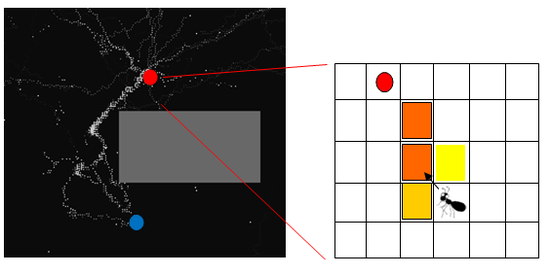Recently, Kevin Kelly (KK) is very hot. In fact, KK's popularity in China is not unrelated to the touts of many Internet giants in China. Nowadays, vocabulary such as decentralization, self-organization, and ecosystem has become the golden rule that Internet companies believe in, and most of them are derived from KK's famous book "Out of Control." This book is talking about a topic from beginning to end, this is a complex system.
In fact, as early as the 1970s and 1980s, scientists have focused their attention on a variety of complex systems, and emergence is the most significant and most important feature of complex systems. Emergence, literally translated into a sudden appearance, in system science it means "the whole is greater than the sum of the parts." Any system is composed of a large number of microscopic elements. Local interactions occur between these microscopic individuals. However, when we regard these individuals as a whole, there will be some new attributes, laws or patterns spontaneously. When it comes out, this phenomenon is called emergence [1].
An emerging example comes from the flashing neon lights in the city. We know that the colorful patterns of neon lights are formed by the flashing of hundreds of light bulbs. At the level of the light bulb, we can't find high-level patterns or text, so patterns and text are the result. Another example comes from the ant kingdom [2]. We all know that every little ant is a very simple individual. They don't have a clever mind and only do some simple tasks. However, when tens of thousands of small ants are grouped together, the entire ant colony can manifest a very complex and huge emergence phenomenon, such as social division of labor, collective collaboration and so on.
For example, in the activities of ants foraging, they can reflect the emerging behavior. We know that because individual ants are weak, their range of vision is very limited and they can only see nearby scenes. However, when a large number of ants work together, they can communicate through interactions to find the fastest route to carry food back to the nest. Then, the fastest moving path is the current ant colony. Moreover, we know that in this group of ants, there is no ant or queen to give orders to the whole team of ants, all the current occurrences are the result of the local interaction of this group of ants.
So, can we draw on emerging ideas to design artificial systems or programs that serve our humanity? This is the problem that needs to be solved in the emerging calculations. Drawing on the emerging ideas into the computing system constitutes the idea of ​​emerging computing. From a computational point of view, an emerging system is actually a parallel computing system. A single ant in an ant colony is a small processor that can perform computational tasks in parallel and locally. Then the ant colony and the neon light can complete complex computing tasks by collecting these parallel processing units, for example, to find an effective food handling path or to form a complex and beautiful pattern. It is entirely possible to design a manual computing system to simulate the overall emerging system by simulating a simple parallel computing unit.
For example, we can simulate the example of ant colony foraging [2]. As shown below:

Computer simulation of ant foraging, white dots indicate ants, gray dots indicate pheromones, red dots indicate food, blue dots indicate nests, gray boxes are obstacles, and the area near the red dot is enlarged to obtain the right image.
IDC D-sub Connectors
IDC (insulation displacement contact) D-sub connectors are a type of electrical connectorthat's designed to be connected to the conductor(s) of an insulated cable, most commonly a ribbon cable(a cable with many conducting wires running parallel to each other on the same flat plane).
Applications for IDC D-sub connectors
IDC D-sub connectors, attached to ribbon cables, are helpful in situations where you need to make a lot of connections without a big number of wires. They're commonly used in computer and electronic systems that require multiple data buses to link internal peripherals, such as disk drives to their drive controllers. They're also frequently used in industrial and telecom applications.
How does an IDC D-sub connector work?
With an IDC D-sub connector, there's no need for cable preparation – in other words, you don't need the strip the cables of their insulation before connecting. To connect the cable to the connector, there are sharpened blades (or contacts) on the connector that force through the insulation around the cable, making a secure connection.
IDC D sub connector from Antenk, Outstanding features high contact reliability, long life and low contact resistance.
Low Profile IDC D-Sub Connectors,Flat Cable IDC D-Sub Connectors,D Sub Connector IDC Type,IDC D-Sub Standard Connectors
ShenZhen Antenk Electronics Co,Ltd , https://www.antenkconn.com
